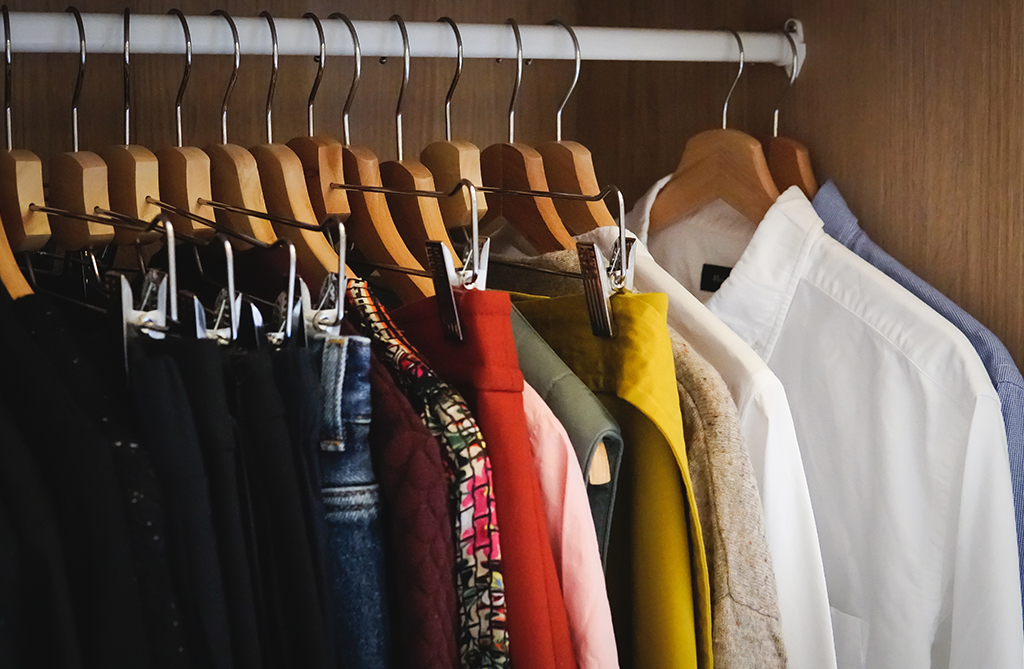Below are Cromwell’s simpler recycling plan for textile waste. Textile recycling may often appear daunting and complex. Cromwell suggest a three-point plan to help textiles reach its best end-of-life solution in the simplest plan possible.
Textile Waste
Spring has most certainly sprung, and with the weather getting warmer, it is time to pack away the winter coat and bring out the spring cardigan. But while we reorganise the wardrobes for many, it might be time to have a bit of a clear-out and dispose of our pre-loved clothing. Yet despite no longer having a need for these items, the general waste bin should always be a final resort for disposal—there are many more circular options to consider.
Step 1: Try repair & reduction
Often, one big reason we are disposing of our clothing is wear and tear – this is where we often don’t feel it appropriate to donate or sell, so instead, it will result in being sent for disposal, and more often than not, this links to landfill. Instead, we should think about repairing our worn goods, whether it is taking them to a tailors, or even repairing them ourselves, a quick trip with the sewing machine can leave them as good as new.

However, the best way to reduce textile waste is to help make your clothing last – avoid buying textiles you don’t need to, and if you do, firstly look in charity shops or second-hand websites and stores to help reduce the need for new material.
Step 2: Try upcycling and repurposing
Disposal or recycling doesn’t have to be the only option when it comes to finding a solution for your unwanted clothing – instead, get creative and make something new from your old clothes. Upcycling textile waste is an innovative and sustainable solution that gives old garments a new life while reducing environmental impact. Instead of discarding worn or outdated clothes, upcycling involves creatively repurposing them into new fashion items, home décor, or functional accessories. Supporting upcycling initiatives helps conserve resources, lower carbon emissions, and inspire a culture of responsible consumption in the fashion industry, it also will leave you with a unique, bespoke item that you have created yourself.
Step 3: Recycle / Donate Your Unwanted Clothing & Textile
With fashion, clothing and textiles contributing significantly to global waste, it is vitally important that we take steps to recycle these items. Supporting textile recycling is essential for reducing waste, conserving resources, and promoting a circular economy. Recycling your unwanted clothing can be done by simply bagging your pre-loved clothes and donating them to a local charity shop or clothing bank. They say that one person’s trash is another person’s treasure, so donating to charity shops is not only a great way to keep clothing out of landfills but will also help to support charities and clothing banks by helping to raise funds through recycling.
Charity Shops and Clothing banks are not the only options for recycling; you can earn a bit of money yourself from your unwanted goods by selling them. Whether it is online via social media or thrift apps like Vinted or at a car boot sale, textile bargains are always a hit for many and help you earn a bit of extra cash whilst also saving the planet.
Many fashion brands, such as H&M, Levi’s, and Patagonia, have recycling programs where customers can drop off old clothes for reuse or recycling. This initiative is gaining a lot of attraction, so it is highly likely that more and more retailer will join the trend and begin offering their own recycling collections in-store.
In conclusion
By embracing donation, upcycling, and innovative recycling technologies, we can help divert millions of garments from landfills each year. As we move toward a circular economy, prioritising textile recycling is not just an environmental necessity but also an opportunity to create a more resourceful world.